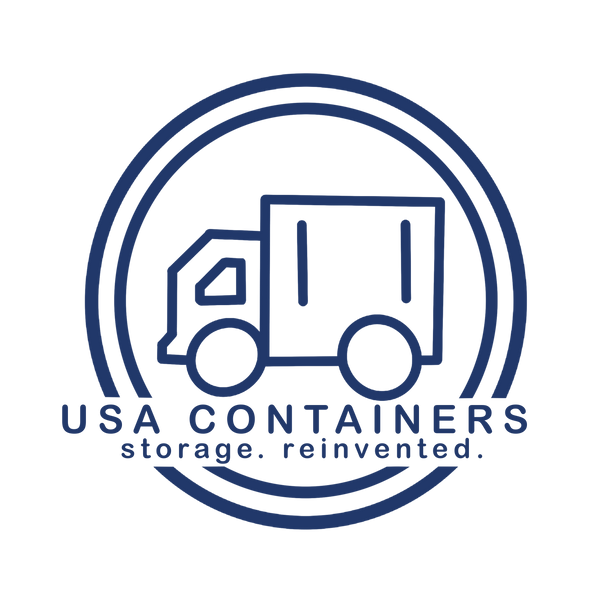
Shipping Container Classifications and Certification: What You Need to Know
Share
If you’ve ever shopped online for a shipping container, you’ve probably come across acronyms and terms like WWT, CW, AS IS, IICL, ISO, and CSC, and wondered what they mean. Whether you’re looking to use a container for storage, modify one for a tiny home, or ship goods internationally, understanding container classifications and certification is key to buying the best one for your needs.
Shipping Container Classifications
Shipping containers are classified based on their condition and intended use. Since most containers go through years (or sometimes decades) of service they naturally show signs of wear and tear. Classifying them helps buyers understand what they’re getting and what type of container will suit their needs.
There’s no standardized grading system, but here are the most common classification types you’ll see:
New (One-Trip): Manufactured overseas (typically in China), new (one-trip) shipping containers are loaded with cargo and sent to the U.S. or another destination. After that, they’re sold as “new.” They’re in excellent condition, with minimal dents or rust, and are perfect for anyone who wants a like-new container for storage, modifications, or a long-term investment.
IICL: The Institute of International Container Lessors (IICL) grade is one of the highest standards, mostly used by leasing companies. These containers are newer, in excellent condition, and usually more expensive.
CW (Cargo Worthy): These containers meet the structural requirements for shipping and can be certified by a qualified inspector. A CW container is just a WWT container that’s been inspected and approved for overseas transport.
WWT (Wind and Watertight): These containers are guaranteed to keep out wind and water. That means no holes, intact seals, and working doors. WWT containers are perfect for storage or building projects. They're not certified for shipping—but that doesn’t mean they can’t be.
AS IS: These containers are sold in their current condition with no guarantees. They may have structural issues, floor damage, or holes. They're not suitable for shipping or secure storage—use at your own risk.
New (One-Trip) Containers: Worth the Extra Cost?
One-trip containers are considered “new” in the shipping container world. They're a great option if aesthetics, longevity, or minimal wear and tear are important to you.
Here’s what you get with a one-trip container:
- No rust
- 8 or more vents
- Fresh paint, immaculate floor, and easy-to-open doors
- No shipping company logos
- Often still have full ISO compliance and a valid CSC plate
- Ready to be certified for shipping, modification, or storage
Because these containers have only made a single overseas trip, they're as close to brand new as you can get. Yes, they cost more upfront, but the long-term value—especially if you're planning a conversion project or want it to last decades—is often worth it.
WWT vs. CW: What's the Real Difference?
The main difference between Wind and Watertight (WWT) container and a Cargo Worthy (CW) container is certification.
A WWT container hasn’t been certified—but that doesn’t mean it’s doesn’t meet the same standards. Think of it this way—every CW container is WWT, but not every WWT container is certified as cargo worthy.
A CW container can be certified as structurally sound for intermodal transport. That means it can be loaded onto ships, trains, and trucks for international travel. The certification process checks everything: corner castings, door functionality, floor integrity, and structural condition.
Here’s what you get with a WWT/CW container:
- Visible surface rust
- Working doors
- Lifetime wind and watertight warranty
- 10-year structural warranty
Why Certification Matters for Shipping
To legally move a container across international waters, it must have a valid CSC (Convention for Safe Containers) plate. This plate verifies that the container meets global safety and design standards set by the International Maritime Organization (IMO).
The CSC plate includes:
-
The container’s serial number
-
Max gross weight and stacking weight
-
Manufacturer info and date
-
Inspection and recertification dates
Without this plate, your container won’t be accepted by most shipping lines.
As-Is Containers
As-is containers are not inspected and don’t come with a warranty.
Here’s what you get with a as-is container:
- Visible rust
- Probability of holes
- Doors may be difficult to open
Choose a Classification Based on Your Budget and the Shipping Container’s Intended Use
Choosing the right container depends entirely on what you're using it for:
Want the best? Go with a one-trip container. It’s like-new and will hold its value longer.
Need a reliable storage solution? A WWT container does the job affordably.
Shipping overseas? Make sure your container is Cargo Worthy or a WWT unit that can be certified.
Looking to modify or build? WWT or one-trip containers are both great starting foundations for building projects.
On a tight budget? You might consider an AS IS unit—but only if you’re not going to be using it for shipping or secure storage.
Fill out the form below for a free shipping container quote from USA Containers:
Frequently Asked Questions
What does “WWT” mean?
WWT stands for “wind and watertight,” meaning the shipping container is structurally sound—no holes, intact seals, functioning doors—but not automatically certified for overseas shipping.
How does a CW shipping container differ from WWT?
A CW (Cargo Worthy) container meets structural requirements for overseas transport, essentially a WWT container that can be certified.
What’s a “one‑trip” container?
New (one‑trip) shipping containers have made just one overseas voyage, are in like-new condition (minimal wear, no rust), and often still hold seaworthy certification.
What is an “as-is” container?
Containers sold “as-is” come with no guarantees and may have structural damage like holes or floor issues, making them unsuitable for secure storage or shipping.
